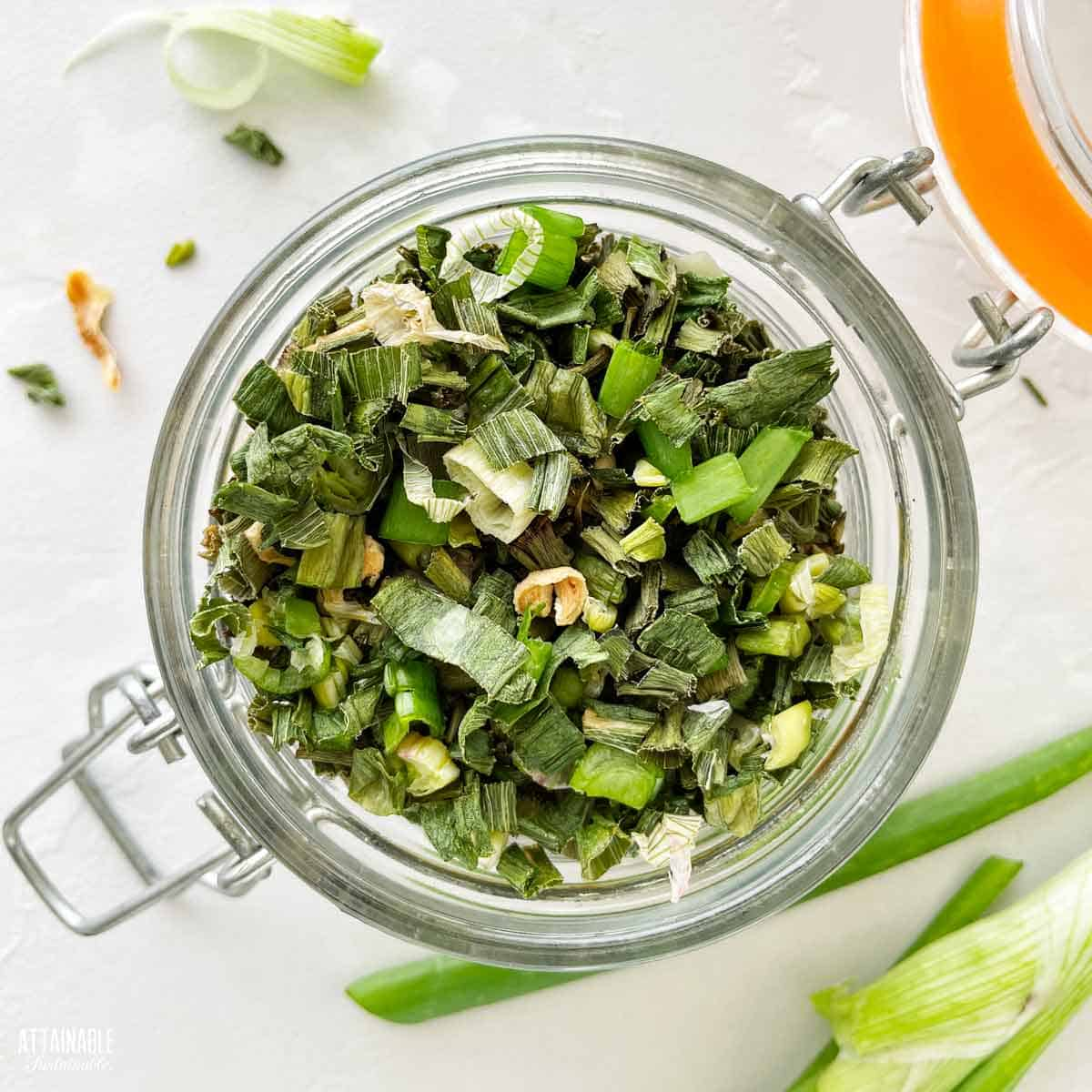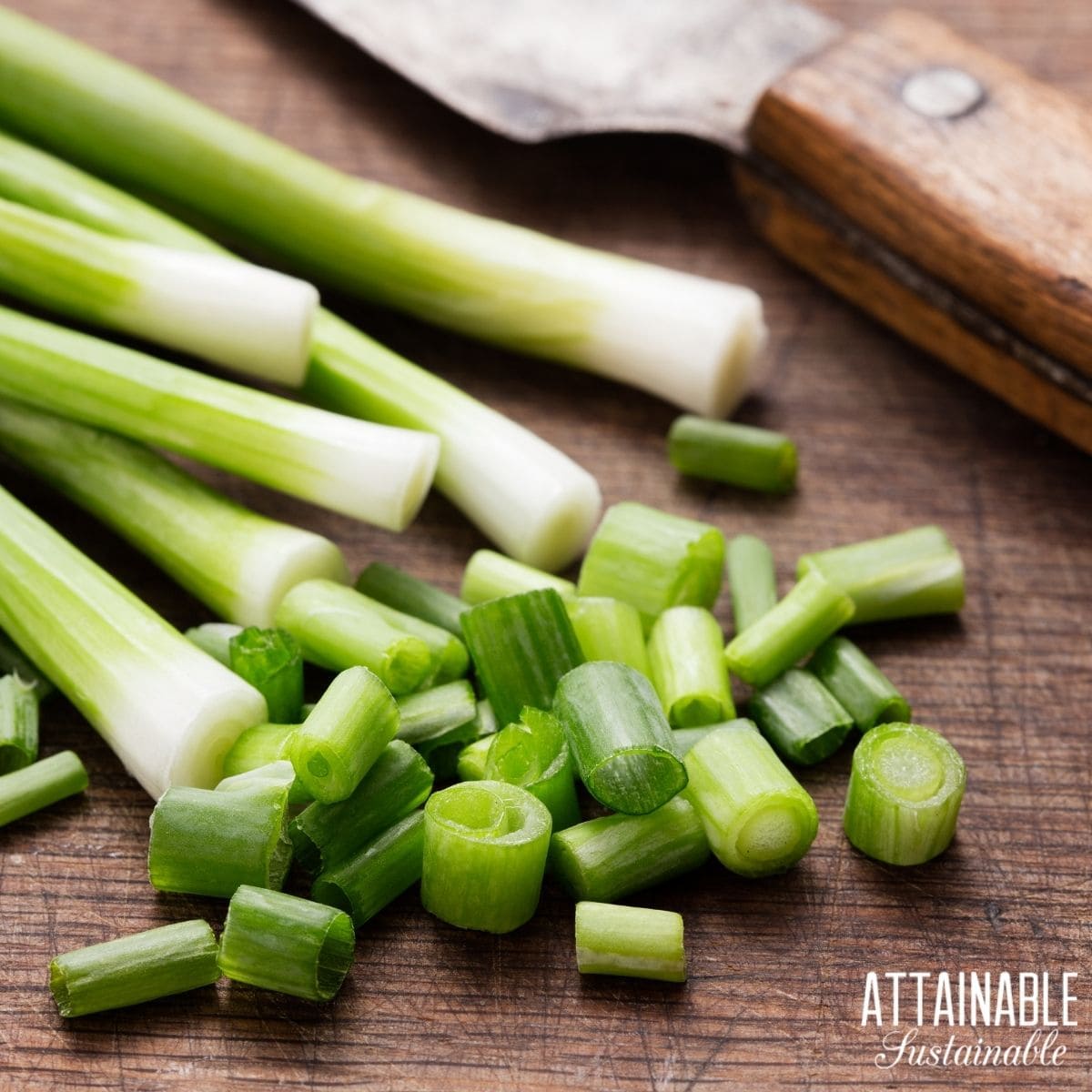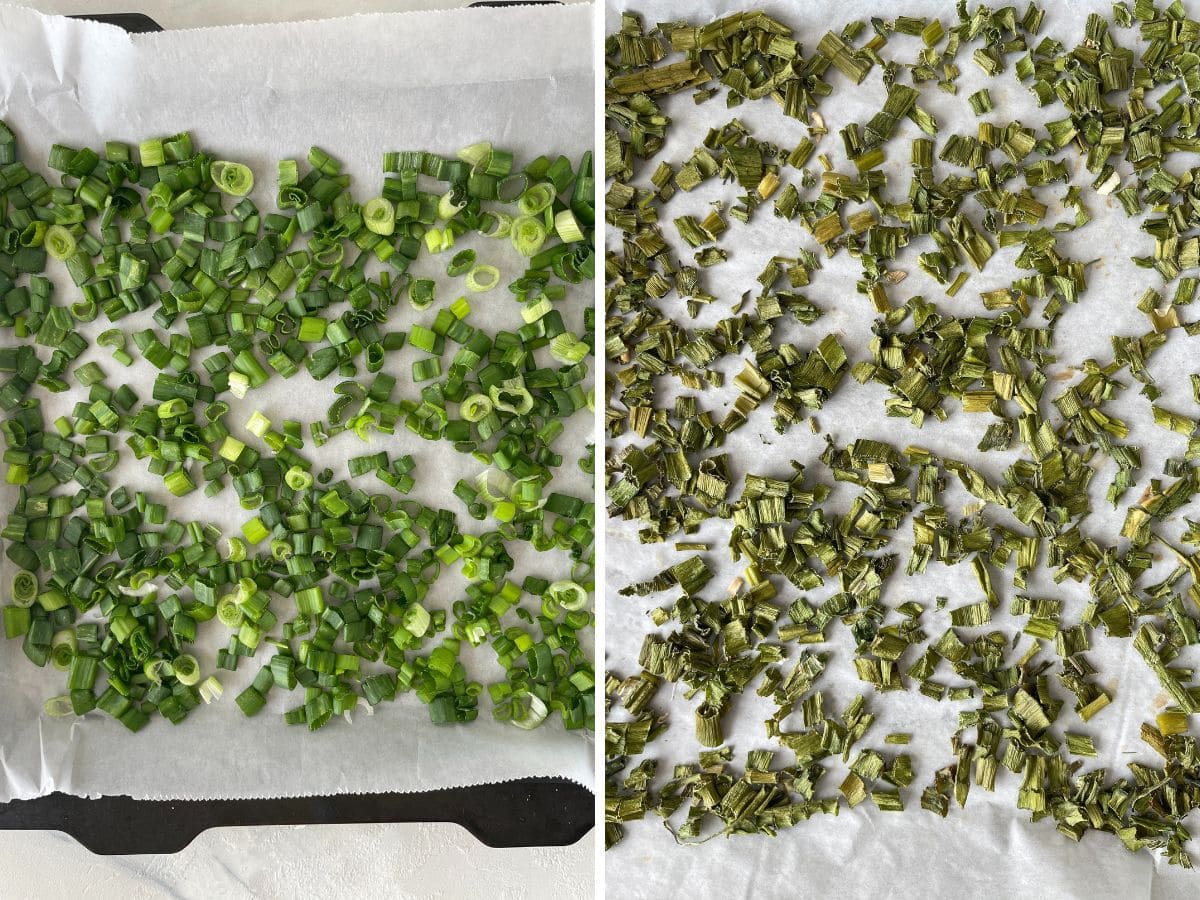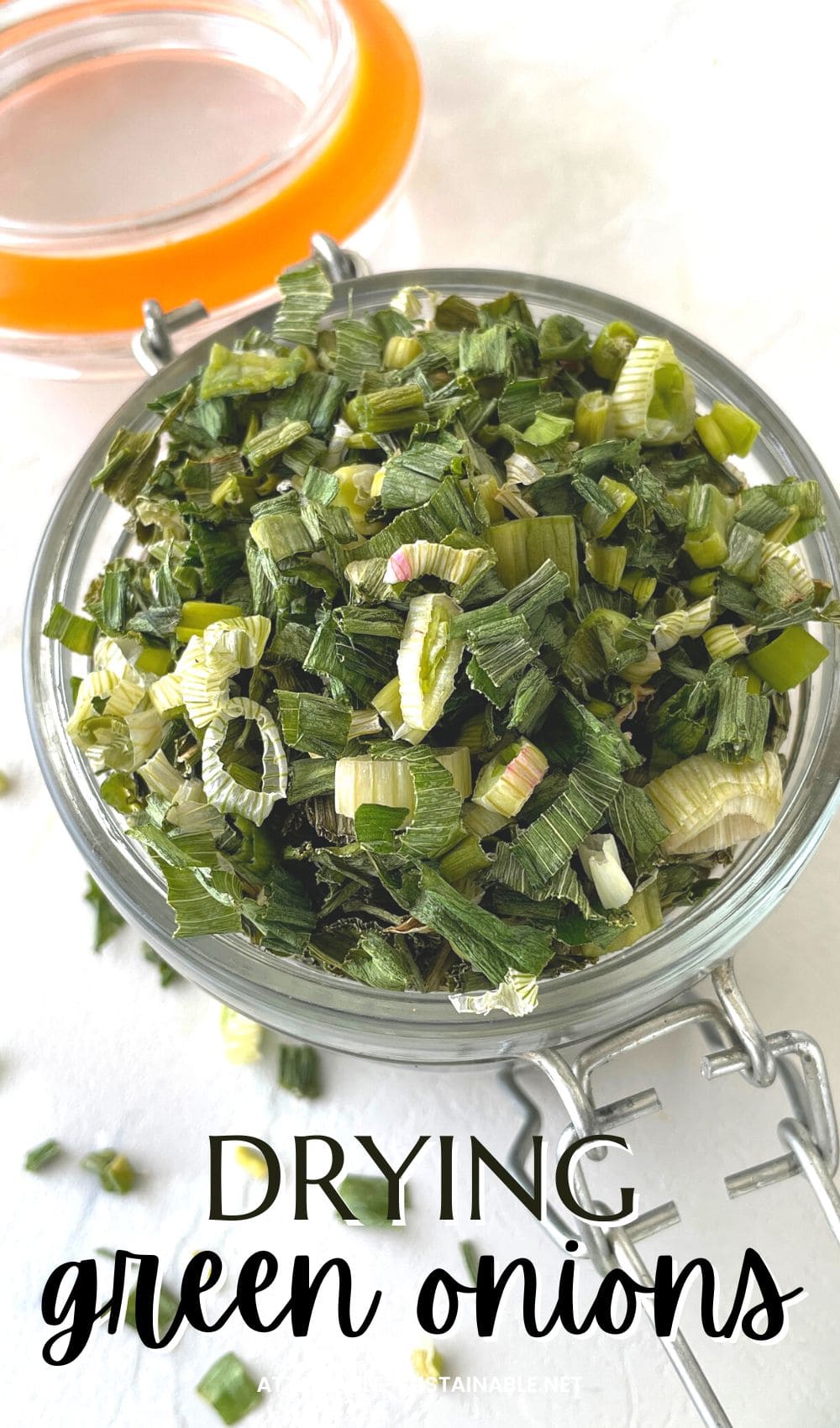Whether you’re buying bunches of green onions at the store or harvesting them from the garden, drying green onions is a great way to preserve them.

You’ve been there. You bought a bunch of green onions for a recipe, used one or two, and the rest got gross in the fridge. Dehydrating them before they turn into limp strings is a good way to prevent the waste that comes from buying a bunch when you only need single scallion.
If you don’t have enough green onions to fill a dehydrator, consider combining them with other herbs for drying, such as parsley or basil.
And of course, if you’re harvesting green onions from the garden, you’ll have plenty to fill a dehydrator!
Making Dehydrated Green Onions
Green onions – often called scallions or spring onions – are used primarily for their green tops. Start by washing and fully drying them, then use a sharp knife to cut the greens into uniform pieces. I cut mine into pieces that range from 1/4″-1/2″ long.
5 Easy Steps to Transform Your Pantry!
Ready to switch from store bought to homemade? Let me help you make some changes! Grab my FREE five-part guide to getting started.
When slicing, cut the green tops all the way down to the whites of the scallion. It’s okay to use some of the white, but you can also set those pieces aside for use in another recipe.
The length of time it takes for green onions to dry will depend entirely on the temperature, humidity, and the method used.
Using a Dehydrator to Dry Green Onions
A food dehydrator offers a more controlled environment for drying fresh herbs. It’s my preferred method, though it’s not the only way to do it.
To dry green onions in a food dehydrator, spread in a single layer on dehydrator trays. Position them so that they’re close together but not overlapping. This allows for free air flow.
Set dehydrator to lowest heat setting (some dehydrators have an “herb” setting). The ideal temperature is 95 degrees, which will slowly dry out the leaves without cooking them.
How long it takes to dehydrate green onions will vary greatly based on the humidity of your region. Begin checking green onions after about five hours, though depending on your climate, this can take as long as 6-8 hours.
Drying Fresh Green Onions in the Oven
You can dry green onions in your oven, though the minimum temperatures that some ovens have aren’t ideal. The best way to do it is to use the bread proofing setting if you have a newer oven.
If your oven doesn’t have a bread proofing setting, turn it onto its lowest setting and prop the oven door open to avoid overheating.
Line a baking sheet with a kitchen towel and place leaves in a single layer so that they barely touch. Transfer trays to the oven and dry for six to eight hours, checking frequently as the leaves begin to dry out.
When are the Dehydrated Scallions Done?
Test the leaves by crushing them in your hand. If the green onions is dry enough, it should crumble easily into dry little bits. If they just roll or bend or wrinkle in your hand, they still need more time.
It will be fairly obvious which leaves need more time. Return those to the tray and continue drying until they reach peak crispiness.
When the green onions leaves are crispy, rub them between your fingers to crush them for storage.
Store dried green onions leaves in an air tight container. I like to use upcycled glass jars or a Mason jar with a leakproof lid (these are more airtight than a lid and ring). Adding a desiccant packet can help maintain freshness. Store in a cool, dark place for the best shelf life.
Using Them
Add these dehydrated onions to any recipes that you’d use fresh green onions in.
To rehydrate dried green onion, soak in warm water for half an hour or so. In most cases, though, there’s no need to rehydrate; just stir the dry bits into soups, egg salad, or this green onion dip recipe and they’ll absorb moisture from the recipe.
To take this a step further, you can process the dried green onion pieces in a spice grinder to make a green onion powder. Simply add the dried onion pieces to the grinder and process until you have a fine powder.

How to Dry Green Onions
Ingredients
- Fresh green onions
Instructions
- Prepare the green onions by washing and thoroughly drying. Remove any parts that don't look fresh.Fresh green onions
- Cut the onions into 1/4"-1/2" pieces, including the green leaves and some of the white bulb.
- Place green onion in a single layer on dehydrator trays or a baking sheet lined with a towel or parchment paper. Pack as many as you can onto the trays without overlapping a lot.
Dehydrator:
- Set dehydrator to 95 degrees Fahrenheit or the lowest heat setting - some dehydrators have an “herb” setting. Begin checking green onions after about four hours, though depending on your climate, this can take as much as 8-10 hours.
Oven:
- Turn the oven onto its lowest setting. If yours is a newer oven with a bread proofing setting, use that, otherwise aim for a temperature no higher than 180 degrees Fahrenheit and prop the door open to let some of the heat escape. (Place a wooden spoon between the oven and the door to hold in slightly ajar.) It will take 4-5r hours or longer for the onions to completely dry, again, depending on the temperature you use and the humidity. Check it frequently.
Notes
- How long it takes to achieve fully dried green onions will vary greatly based on the humidity of your region. The pieces are done when they are crunchy and crumble when you pinch them.
- You'll need about 8-10 scallions for each dehydrator tray. I say about because this depends a lot on how full you pack the leaves in the bowl and how much you are able to fit on the trays. A 9-tray Excalibur dehydrator with all trays filled will net 2-3 cups of dried scallions.
- Store in an airtight container.








